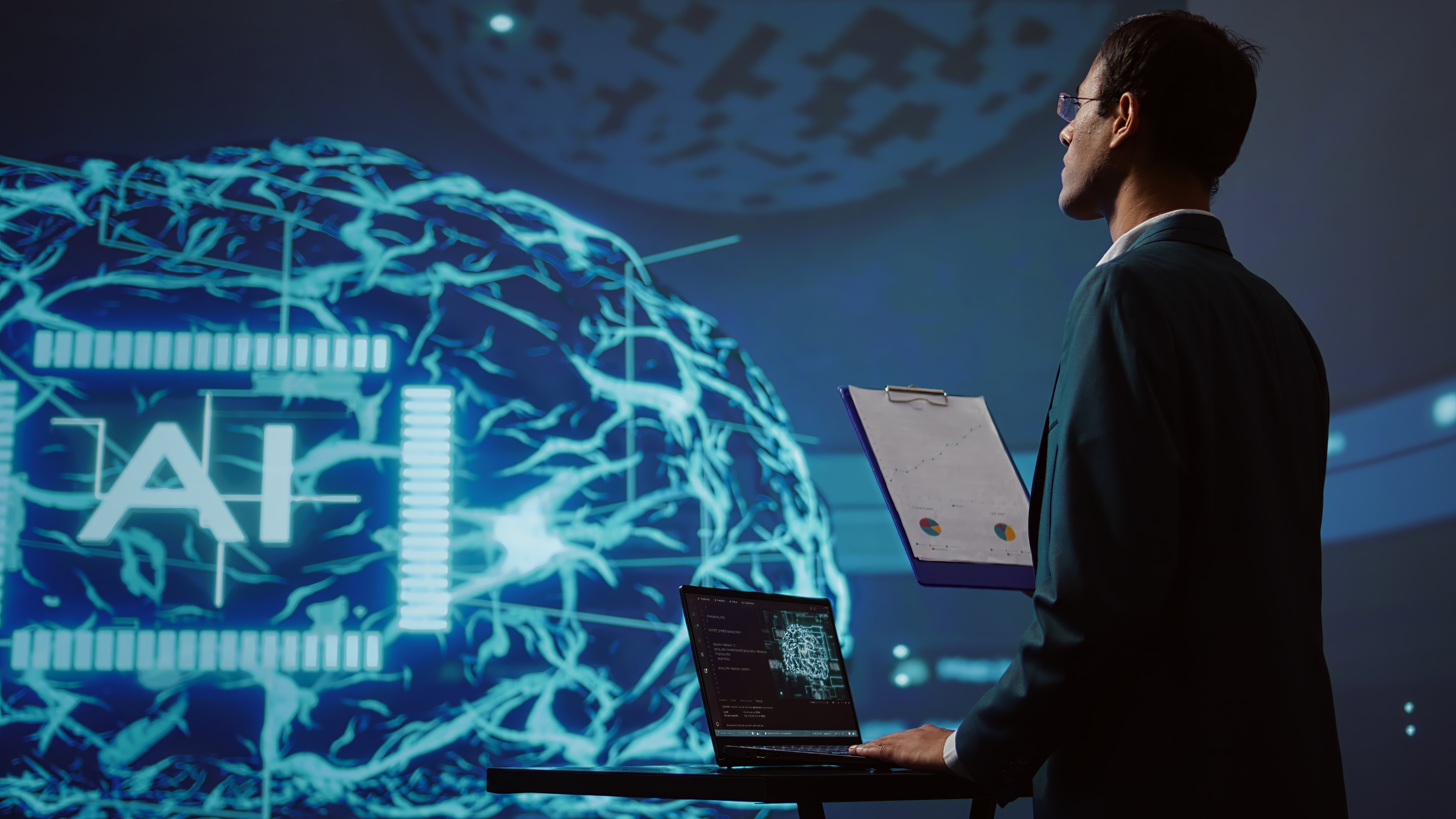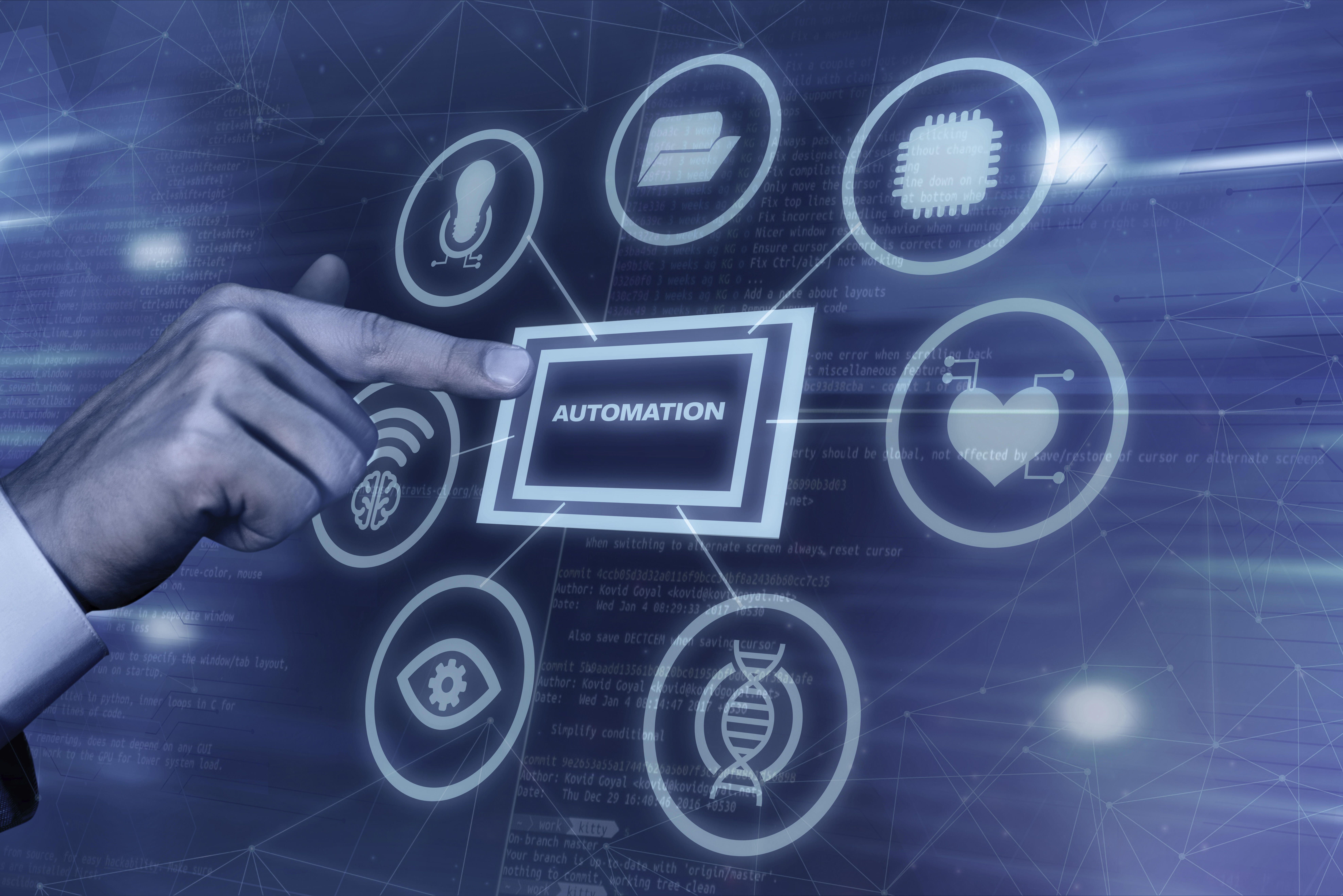How to Get Started with AI Programming Using Python: Step-by-Step Tutorial
What is AI Programming with Python and Why Should Beginners Learn it?
Artificial Intelligence (AI) is the science and field of study focused on creating machines and software that can mimic human intelligence. These systems are designed to think, learn, adapt, and make decisions based on data, similar to how humans process information. AI encompasses a broad range of technologies, from machine learning and natural language processing to robotics and computer vision. You can see AI in action every day—whether it's in self-driving cars that navigate through traffic, voice assistants like Siri and Alexa that understand and respond to spoken commands, or even recommendation systems that suggest what you should watch next on Netflix. AI is revolutionizing industries, transforming how we work, live, and interact with technology.
However, building such intelligent systems requires powerful tools and efficient programming languages. One of the best tools for this job is Python. Python’s simplicity and versatility make it a go-to language for AI development. It has an extensive library ecosystem designed specifically for AI, allowing developers to implement complex algorithms and models without getting lost in the details of low-level programming. This is why Python has become the dominant language in AI research and development, helping to shape the future of this exciting field.
Python’s Role in AI Development
Python is one of the most popular programming languages used in AI development today. It is simple to learn, easy to read, and has a huge community of developers. What makes Python so powerful for AI is its rich ecosystem of libraries and tools. These tools help developers quickly build, train, and test AI models without starting from scratch. Libraries like TensorFlow, scikit-learn, and PyTorch are widely used by professionals and are all built to work seamlessly with Python.
Why Should Beginners Start with Python for AI?
If you’re just getting started in AI, Python is the perfect language to learn first. Unlike other programming languages that may have a steep learning curve, Python’s clean and straightforward syntax makes it beginner-friendly. It allows you to focus on understanding AI concepts instead of struggling with complex code. Learning ai programming with python gives you a strong foundation for building real-world applications. Whether you’re interested in data analysis, computer vision, or natural language processing, Python provides the tools and support to help you get started with confidence.
What you’ll learn in This Tutorial
In this step-by-step guide, you’ll learn how to set up your Python environment, understand the basics of Python for AI, explore key AI libraries, and build your first simple AI project. This tutorial is designed to be clear, practical, and beginner-friendly.
Why Choose Python for AI Programming?
Python is one of the most widely used and versatile programming languages in the world, and its popularity continues to grow—especially in the fields of artificial intelligence (AI) and machine learning. Its simple syntax, combined with powerful libraries and frameworks, makes it an ideal choice for developers working on complex AI projects. Python allows developers to efficiently implement and experiment with AI algorithms, while also providing the flexibility to scale these solutions. This combination of ease-of-use and capability is why Python is often the first language taught in AI courses and why it is favoured by both beginners and experienced professionals alike. Let’s dive into the reasons why Python is the go-to language for AI developers around the globe. Using Python.
Python's Popularity in AI and Machine Learning
Python has grown to be the go-to language for AI development, thanks to its widespread use in academia, research, and industry. Its rich set of libraries and frameworks designed for AI applications makes it the perfect tool for both beginners and experts. Libraries like TensorFlow, PyTorch, scikit-learn, and Keras provide pre-built functions and tools for everything from building neural networks to training machine learning models. Because of these powerful resources, Python is frequently chosen for both prototyping and deploying AI solutions at scale.
Simplicity, Readability, and Community Support
One of Python's greatest strengths is its simplicity and readability. Python's syntax is clean and easy to understand, which allows developers to focus on problem-solving rather than worrying about complex language rules. For newcomers to AI, this means you can learn the fundamentals quickly without getting bogged down by language intricacies. Additionally, Python has a massive global community of developers who contribute to its growth. This means abundant resources like tutorials, forums, and documentation are available to help beginners navigate the world of AI. Whether you're debugging a project or learning new AI techniques, you can find plenty of help online.
Examples of Real-World AI Projects Using Python
AI for Python is behind some of the most exciting developments in modern technology. From recommendation engines like those on Netflix and Amazon to self-driving cars and facial recognition systems, Python plays a crucial role in making these AI-powered systems a reality. Major companies like Google, Facebook, and Tesla use Python to build and maintain their AI-driven technologies, showcasing its ability to handle complex, large-scale AI projects.
How Do you Set Up your Environment for AI Programming with Python?
Setting up your development environment is a crucial first step in embarking on your journey to build powerful AI applications. Without the right tools and software in place, it can be difficult to effectively write, test, and run your AI code. In this section, we’ll guide you through the entire process of preparing your machine for AI programming with Python. From installing the Python programming language itself to configuring essential libraries and tools, we’ll ensure you have everything you need to start developing AI applications with confidence. Whether you're a complete beginner or an experienced developer, having the correct setup will streamline your workflow and help you focus on building your AI models rather than troubleshooting technical issues. Let’s get started!
Installing Python
The first step in setting up your environment is installing Python itself. You can download Python from its official website (python.org). Make sure to download the latest stable version for your operating system. During installation, remember to check the box that says "Add Python to PATH" to ensure that you can run Python from the command line. If you're new to Python, don't worry—this installation process is straightforward, and there are plenty of online guides and resources available if you need help.
Setting Up a Code Editor
Next, you’ll need a code editor to write your Python code. Two popular choices for AI programming are VS Code and Jupyter Notebook. VS Code is a versatile editor with excellent Python support and extensions that make coding and debugging easier. Alternatively, Jupyter Notebook is ideal for data analysis and machine learning tasks, as it allows you to write code in blocks and see the output immediately. Both editors are widely used in the AI community, and either will work perfectly for your AI programming projects.
Important Python Libraries for AI
Python offers a range of powerful libraries that are essential for AI programming. NumPy is a fundamental library for numerical computations, making it easy to work with arrays and perform complex mathematical operations. Pandas is widely used for data manipulation and analysis, providing efficient tools for handling structured data. For machine learning tasks, scikit-learn offers simple yet effective tools to implement common algorithms like classification, regression, and clustering. When it comes to deep learning, TensorFlow and PyTorch are two of the most popular libraries, enabling developers to build, train, and deploy neural networks and complex models that are central to AI applications.
What are the Basics of Python in AI and Why are they Important?
Before diving into more advanced AI techniques and algorithms, it's essential to build a strong foundation by mastering the fundamental concepts of Python. Python is the language most widely used in AI development due to its simplicity, readability, and vast ecosystem of libraries. Understanding the core elements of Python—such as variables, loops, functions, and classes—will give you the tools needed to write efficient, effective code. These basics not only form the backbone of any Python program but also enable you to approach AI projects with confidence. With a solid grasp of Python fundamentals, you'll be able to focus on solving complex AI problems without getting lost in the intricacies of the language itself, ensuring a smoother and more productive development process.
Python Fundamentals You Should Know
To begin programming in Python for AI, there are several essential concepts you need to understand. Variables are used to store data such as numbers, text, or lists, and knowing how to assign and manipulate them is fundamental for any Python project. Loops are another important concept, allowing you to repeat tasks automatically, which is especially useful in AI when processing large datasets or iterating through training sets. Functions are reusable blocks of code that make your program more efficient and structured, and you’ll frequently use them in AI projects to organize tasks and simplify complex operations. Lastly, Classes are part of Python's object-oriented nature, helping you organize data and behaviour into manageable structures. This is particularly crucial in AI development, where managing complex data and building scalable systems is key to success. By mastering these concepts, you'll be well-equipped to tackle AI projects effectively.
Why are these Basics Important for AI Projects?
The fundamentals of python in ai are the building blocks for more advanced concepts. Without a solid understanding of variables, loops, functions, and classes, you might find it difficult to manage data, control your program’s flow, and structure your AI code in an efficient way. Mastering these basics will not only make your AI programming more effective but also allow you to build more complex models and algorithms.
Quick Practice: Writing Your First Python Script
To get hands-on experience, try writing a simple Python script. Start by creating a basic program that asks the user for input and then outputs a response. This will give you a feel for how Python works and help reinforce the core concepts.
How is AI Explored Using Python?
Python has become the dominant programming language for AI due to its vast ecosystem of libraries designed to simplify AI development. These libraries allow developers to build powerful AI models with ease. Let’s explore some of the key libraries used in AI programming and how each one contributes to different AI applications.
Introduction to AI-Specific Libraries
When it comes to AI for Python, several specialized libraries provide the necessary tools to implement AI algorithms efficiently. These libraries cover various aspects of AI, such as machine learning, deep learning, and natural language processing. With the right library, developers can focus on building intelligent systems without having to reinvent the wheel.
How Each Library Helps in AI Projects
Each library serves a unique role in AI development. scikit-learn makes machine learning easy to implement and experiment with, while TensorFlow and PyTorch help in building robust deep learning models. Meanwhile, NLTK and spaCy simplify NLP tasks, enabling developers to work with text data more effectively. By leveraging these libraries, you can significantly reduce the complexity of AI projects and focus on innovation.
What is your First AI Project with Python?
A great way to get started with AI programming in Python is by working on a simple project. For this example, let’s predict house prices based on various features like location, size, and number of rooms. Predicting house prices is a classic regression problem in machine learning, and Python provides all the necessary tools to build this model.
Importing Libraries
The first step is to import the libraries you need. Libraries like pandas, NumPy, matplotlib, and scikit-learn are essential for handling data, creating models, and visualizing results. With these libraries, you can efficiently manipulate data and implement machine learning algorithms.
Loading and Understanding Your Data
Next, you load your dataset. This could be a CSV file or any structured data format. The goal is to understand your data by looking at features such as the number of bedrooms, square footage, and the age of the house. You’ll also want to check for missing values and get an overview of the statistical properties of your dataset, such as the mean, median, and standard deviation.
Pre-processing the Data
Data pre-processing is crucial in AI for Python. This step involves cleaning the data by filling in or removing missing values, encoding categorical variables, and scaling numerical features. Proper pre-processing ensures that the data is in a suitable format for training your machine learning model.
What are Common Mistakes Beginners Make in Python for AI (and How Can You Avoid Them)?
When starting out with Python for AI, beginners often encounter a series of common mistakes that can significantly slow their progress or lead to unnecessary frustration. These errors can range from skipping essential learning steps to misunderstanding key concepts, all of which can hinder development and result in inefficient code. Recognizing these pitfalls early on is essential to making steady progress and avoiding setbacks. By understanding these mistakes and learning how to avoid them, you can streamline your learning process, build a strong foundation, and gradually develop the skills needed to become proficient in AI development. A proactive approach to overcoming these challenges will not only help you navigate the complexities of AI programming but also boost your confidence as you move forward in your learning journey.
Underestimating the Importance of Math
One of the biggest mistakes beginners make is underestimating the importance of mathematics in AI. While Python itself is a powerful tool for AI, the algorithms behind machine learning and deep learning models are deeply rooted in mathematical concepts like linear algebra, calculus, and statistics. Without a solid understanding of these fundamentals, it’s challenging to understand how AI models work or to fine-tune them for optimal performance. It’s essential to invest time in learning the mathematics behind AI, as this will help you understand the models you’re implementing and improve your results.
Skipping Python Fundamentals
Another common mistake is skipping over Python fundamentals. Although it might seem tempting to jump straight into AI-specific libraries and frameworks, skipping the basics of Python—such as working with variables, loops, and functions—can lead to inefficiencies and confusion. A strong grasp of Python’s core concepts is essential for working with any AI project. Make sure to master Python basics before diving into more advanced topics.
Conclusion
In this guide, we’ve covered the key steps to get started with AI programming with Python, from setting up your environment to building your first AI project. By understanding Python fundamentals, working with essential libraries, and avoiding common mistakes, you’ve laid a strong foundation for your AI journey. Remember, learning AI is an ongoing process, and the more you practice, the better you’ll become. Keep exploring Python in AI, AI for python, and don’t hesitate to take on more challenging projects. Your skills will continue to grow as you apply what you've learned to real-world problems.









